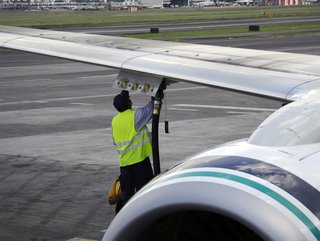Powering the sustainable aviation revolution

A recent report released by sustainable aviation experts at Atkins, a member of the SNC-Lavalin Group, has cautioned that meeting the net zero targets set for 2050 in the aviation industry will necessitate significant changes in sustainable energy and fuel production infrastructure, particularly if commercial air transport continues to expand as expected.
The white paper, titled "Alternative Fuels for Sustainable Aviation," highlights that reducing carbon emissions in the aviation sector is not solely dependent on aircraft emissions. The report recommends the use of a mixture of alternative fuel options such as SAF, eFuel, Hydrogen, and batteries to achieve the most effective solution.
However, it also warns that the industry must be ready for the significant implications of utilising these alternative fuels and batteries to achieve the most effective solution. However, it also warns that the industry must be ready for the significant implications of using these alternative fuels and emphasises the significant impact on future energy demand that will be required to produce them.
Will we be generating enough aircraft fuel?
Based on estimated energy efficiencies and the predicted fuel mix, Atkins predicts that generating the necessary global aircraft fuel demand will require 44,000 TWh of energy per year by 2070. This represents a 5700% increase from current aviation energy generation requirements and is almost double the world’s current electricity demand.
It's not just energy generation that is now a concern, other considerations, such as fuel transportation and storage requirements, will also have to be taken into account.
Andrew Caughey, Sustainable Aviation Lead – Aerospace, Atkins says: “Aviation emissions are hard to abate, but not impossible. The sector is making huge strides in its efforts to accelerate the development of new fuels and aircraft that will help deliver zero emission flight. These advances have a wider impact beyond the aerospace industry. Whilst the future mix of low carbon alternative fuel is yet to be determined, the production, storage and transportation of fuels has implications for energy and airport infrastructure and their emissions need to be considered across the whole lifecycle, from ‘source to force’.
“Regions, governments, airports and the wider industry must adopt a holistic approach to scenario modelling when creating masterplans for the infrastructure and ecosystems that will drive the future of sustainable aviation. By understanding the full fuel mix and energy demands for sustainable aviation, governments can use the insight to inform their policy makers and actions – whether that be introducing emissions KPIs, green fuel subsidies, demand management or investing in innovation and development. Integrated system-level planning is vitally important in achieving the transition and must take into account future energy predictions.”






